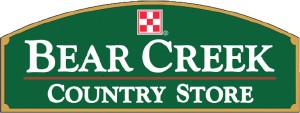 Deer and elk have unique nutritional needs at different times of the year, as a result there can be benefits to year-round supplemental feeding to help maintain optimal health.
Deer and elk have unique nutritional needs at different times of the year, as a result there can be benefits to year-round supplemental feeding to help maintain optimal health.
A successful supplemental feeding program is dependent upon on training deer to consume pellets from a feeder, something that does not come naturally to them.
Utilizing the three steps below will help deer transition smoothly onto a supplemental feeding program, helping to ensure the deer’s nutritional needs are met year-round.
1. Choose a high quality deer feed
Select a feed that is formulated to match the unique needs of animals in your area; providing them a high quality diet year round can help maximize production and health. Look for feeds that are well researched and water-resistant, this will help reduce pellet waste and labor.
2. Select a high quality deer feeder
Free-choice self-feeders protect pellets and provide them to deer whenever they want to eat. Because deer eat several times a day, professionally made free-choice feeders (or even trough feeders) can be the best way to feed deer for maximum intake and antler growth.
One free-choice feeder can comfortably feed 25 free-ranging deer if each consumes an average of 1.5 lbs of feed per day. Place your feeders along frequently used runways or trails and be sure to have enough so that deer do not have to travel more than ½ to ¾ of a mile to a feeder. A good rule of thumb is to provide one feeder per 300-400 acres. Never hunt in a feeding area.
For best results, make sure your feeder location provides:
- Easy approach into the wind
- Good visibility
- Access to water
- Easy escape routes near cover
- Good deer traffic
To help keep deer on low or unfenced property, place feeding areas near the center of your land and at least 500 yards from the perimeter, if possible. Do not place feeders along fence lines, roads, power lines or in large openings.
Spin feeders with corn can be a useful tool to attract deer to the area you would like to start feeding with free-choice feeders. Spin feeders toss out grain or pellets at timed intervals. It can be beneficial to mix at least 25% corn with the pellets to maintain good flow through the spin feeder.
Note: corn is extremely low in the nutrients necessary to grow big antlers. In addition, corn can founder and may kill deer if too much is consumed at one time. However, when safely used in moderation, it is ideal for drawing deer to an area and training them to eat pellets.
3. Follow these steps to get deer eating from the feeder
Most deer are not used to seeing pellets, so they must be trained to recognize them as food and to eat them out of a feeder. It is best to start a supplemental feeding program when typical food sources (farm crops, natural vegetation, new food plots or even acorns) are no longer in abundance, such as during winter or drought conditions.
Setting up a deer feeder
To set-up a feeder, select an area where deer traffic is good, and then follow these steps:
- Set up a spin feeder to throw out 1-2 pounds of corn every 6 hours, or spread it by hand using gloves or a scoop to limit human scent. This amount will attract them to the area you want to feed. Be sure to have at least one feeding in the middle of the night. Continue this until deer are consistently coming to the area to eat every day. This may take several weeks, depending on deer density, time of year and availability of other food sources.
- Once deer are consistently coming to the area daily looking for corn, set up a free-choice feeder filled with corn. Hand-toss corn on the ground around the feeder. When you observe deer consistently eating out of the free-choice feeder, stop hand-tossing corn.
- Once the deer have been eating corn out of the feeder for at least one week, change the self-feeder mixture to 1/3 pellets and 2/3 corn for another week so the deer can get accustomed to eating pellets. Make sure they clean up the pellets before replacing the mix. If they refuse to clean up the pellets, mix in more corn with the pellets.
- After deer are cleaning up the pellets, transition to a mixture of ½ pellets and ½ corn for one week. If the deer continue to sort out the corn and leave the pellets, continue to mix corn in gradually reducing the amount of corn until they have access to only pellets.
- When the deer are consistently cleaning up the mixture and don’t leave any pellets, put 25 to 50 pounds of just pellets in the free-choice feeder. Never fill a feeder full of pellets the first time regardless of its size – leave room to mix in a little corn in case the deer regress a bit and stop eating pellets. When they are consistently eating pellets from the self-feeder, you may fill it completely with pellets.
- Keep feeders clean. Remove old, wet or spoiled feed before refilling, as deer are very sensitive to odors, and damp or spoiled feed may prevent fresh feed from flowing down. Fresh feed will keep deer coming back.weeks, depending on deer density, time of year and availability of other food sources.
For additional information on training deer or nutrition programs for deer or elk, contact your Purina Animal Nutrition representative. Regulations for the feeding of big game can vary from state to state. Please check with your local game and fish department for the proper usage of this product.
